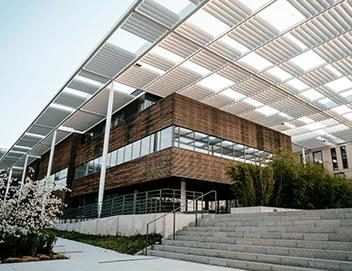The AV of tomorrow is already emerging in Australia. As campuses, corporations, and venues seek higher reliability, lower operating costs, and smarter insights, automation and intelligence in monitoring systems are becoming essential. This blog explores what’s next — and how Australian organisations can lead the shift.
Market Context & Growth Signals
The global AV Remote Monitoring and Management market is expected to grow from USD 27.43 billion in 2024 to USD 40.16 billion by 2033 (CAGR ~5.6 %) Business Research Insights. Meanwhile, the professional AV systems market (hardware + software + services) is projected to rise from USD 4.31 billion in 2025 to USD 6.35 billion by 2029 (CAGR ~10.2 %) Research and Markets. These rising figures reflect increasing investment in software-driven capabilities, automation, and cloud-native integration.
In Australia, the Pro AV market is forecast to reach USD 132.3 million by 2033 (CAGR ~3.96 %) IMARC Group—driven by hybrid work adoption, immersive experiences, and demand for scalable AV infrastructure.
Next-Generation Features Transforming AV Monitoring
1. Automated Workflows & Self-Healing Routines
Instead of relying solely on human engineers, advanced systems can trigger automated fixes — e.g., reboot a display, reload config, re-initialize connection. The idea is to reduce downtime before humans even intervene.
2. Predictive Insights & Anomaly Detection
AI models analyze historical and real-time telemetry, flagging device behaviour that deviates (e.g., increasing temperature, sluggish response). These predictive insights let teams act before failure.
3. Adaptive Alerting & Smart Escalation
Rather than flooding engineers with alerts, systems can prioritise critical issues, suppress noise, and escalate based on context (site importance, usage patterns, dependency chains).
4. Centralised Intelligence Across Sites
As Australian organisations grow — whether multiple campuses, offices, or venues — centralised dashboards unify device health, trends, and alert pipelines for better decision-making.
5. Integration with Smart Building & IoT
AV monitoring converges with other infrastructure (lighting, HVAC, occupancy), enabling richer correlation and smarter decisioning (e.g. dim displays if room usage is low).
Use Case in Australian Environments
- A university in Western Australia applies predictive models to lecture hall projectors, extending their life by 20%.
- A theatre in Adelaide runs self-healing systems to automatically reset audio systems between performances.
- A corporate HQ in Canberra ties AV alerts to its building systems — so audio issues may prompt lighting or HVAC checks.
Roadmap for Adoption
| Step | Focus | Goal |
| Phase 1 | Basic monitoring & alerts | Establish system visibility |
| Phase 2 | Automation & remote actions | Reduce mean time to repair |
| Phase 3 | AI & predictive analytics | Stay ahead of future faults |
| Phase 4 | Integration with building systems | Unified infrastructure insights |
Benefits for Australian Organisations
- Less manual workload for IT/AV teams
- Higher system uptime and reliability
- Smarter capital spending on replacements
- More confidence in hybrid and dynamic environments
Conclusion
Automation, AI, and smart infrastructure are not distant ideals — they’re shifting from innovation to baseline expectation. For Australia’s forward-thinking organisations, adopting next-gen AV monitoring means being ready for what’s next, not just reacting to today’s issues.
If you’re curious how AVM360 is investing in these features, reach out — we’d love to share our roadmap and vision for tomorrow’s AV ecosystems.






